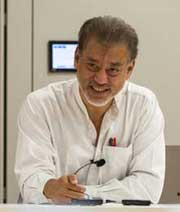Stop Worshiping Central Banks
SYDNEY and KUALA LUMPUR, Oct 18 (IPS) - Preoccupied with enhancing their own ‘credibility’ and reputations, central banks (CBs) are again driving the world economy into recession, financial turmoil and debt crises.
Wall Street ‘cred’
Most CB governors believe ‘credibility’ is desirable and must be achieved by fighting inflation at any cost. To justify their own more harmful policies, they warn inflation is ‘damaging’.

They argue CBs need ‘independence’ from governments to pursue ‘credible’ monetary policy. Inflation targeting to ‘anchor’ inflation expectations is supposed to generate desired ‘confidence’. But CBs have been responsible for many costly failures.
The US Fed deepened the 1930s’ Great Depression, the 1970s’ stagflation and the early 1980s’ contraction, besides contributing to the 2008-09 global financial crisis (GFC). Hence, CB notions of ‘credibility’ and ‘independence’ need to be reconsidered.
Milton Friedman – whom many central bankers revere – blamed the 1930s’ Great Depression on US Fed actions and inactions. Instead of providing liquidity support for businesses struggling with short-term cash-flow problems, it squeezed credit and economies.
But why did the Fed behave as it did? Some economic historians insist it was “to promote the interests of commercial banks, rather than economic recovery”.
Monetary policy before and during the Great Depression “was designed to cause the failure of non-member banks, which would enhance the long-run profits of the Fed’s member banks and enlarge the regulatory domain”.
Others concluded, “Federal Reserve errors seem largely attributable to the continued use of flawed policies” to defend the ‘gold standard’, and its poor understanding of monetary conditions.
Central banks contractionary
Worse, few lessons were learnt. Instead of protecting the gold standard, or being counter-cyclical, fighting inflation is the new CB preoccupation. Even worse, most CBs now commit to an arbitrarily-set inflation target of 2%, first promoted by the Reserve Bank of New Zealand over three decades ago.

Major CB interventions have caused both economic booms or bubbles and busts or contractions, often without mitigating inflation. Such “go-stop” monetary policy swings have caused asset price bubbles and financial fragility besides sudden contractions.
Ben Bernanke’s research team found the major damage from the 1970s’ oil price shocks was due to the “tightening of monetary policy” response. Other research attributed the 1970s’ stagflation largely to the Fed’s “go-stop” monetary policy, worsened by policymakers’ “misperceptions” and “faulty doctrine”.
Labour pays
Likewise, Fed chair Paul Volcker sharply raised interest rates during 1979-81 “to a crushing level of nearly 20 per cent by the middle of 1981”.
This precipitated the “ensuing recession that started in July 1981 became the most severe downturn since the second world war”. US unemployment reached nearly 11% in late 1982, the highest since the Great Depression.
Volcker’s actions betrayed the Fed’s dual mandate to pursue both full employment and price stability. First in the Employment Act of 1946, it was re-codified in the 1978 ‘Humphrey-Hawkins’ Full Employment and Balanced Growth Act.
Eventually, the long-term unemployed “became invisible to both the labour market and to policymakers”. Many became deskilled as others fell victim to criminality, substance abuse, and mental illness, even suicide.
The overall health of Americans became “poorer for years as a result of the deep economic recession in 1981 and 1982”.
Sending Global South south
Volcker’s actions caused developing country debt crises, with decades lost in Latin America and Africa. A recent New York Times opinion-editorial warned, “The Powell pivot to tighter money in 2021 is the equivalent of Mr. Volcker’s 1981 move”, and “the 2020s economy could resemble the 1980s”.
Yet, invoking CB credibility, many with power and influence are urging the Fed to stick to its guns with Volcker’s “courage to take out the baseball bat to slam the economy and slay inflation”!
The World Bank warns of dire developing country debt crises following policy-induced recessions. Meanwhile, the International Monetary Fund has warned developing economies with dollar-denominated debt of imminent foreign exchange crises.
Stop-go new norm
Fed, Bank of England and European Central Bank policy approaches still justify “go-stop” monetary policy reversals. Resulting booms or bubbles and busts also feature in other recent crises, e.g., the GFC.
Following the 1997 East Asian financial crises, Mexican, Russian and post-US ‘dotcom bubble’ bust, the Fed eased monetary policy too much for too long during the ‘Great Moderation’.
CBs enabled credit expansion in the 2000s, culminating in the GFC. More worryingly, the “near-consensus view” is that independent CBs have failed to achieve – let alone protect – financial stability.
Easy credit and rising stock and housing markets have involved rapid credit and loan growth worsening asset price bubbles. Regulatory oversight became increasingly lax as investors ‘chased yield’. Leverage grew, using dodgy ‘derivative’ products, making proper risk assessment difficult.
Guy Debelle, once Deputy Governor of Australia’s CB, noted, “The goal of financial stability has generally been left vague”. Hence, CBs failed to see significant build-up of financial instability”. Soon after, the Lehman Brothers’ collapse precipitated the GFC.
QE magic from bubble to bust
Governments withdrew fiscal ‘stimuli’ too soon. So, major CBs aggressively pursued ‘unconventional monetary policies’, especially ‘quantitative easing’, to keep economies afloat.
Extraordinary monetary expansion provided vital liquidity, but poor coordination also fuelled asset price bubbles. Thus, unviable enterprises survived, undermining productivity growth.
With less investment in the real economy, supply capacity is falling behind still growing demand. Pandemic, war and sanctions have also disrupted supplies.
Raising interest rates, CBs now race to reverse earlier monetary expansion. Credit contractions are squeezing economies, hitting poorer countries especially hard.
Reviewing historical data, the author of the ‘Taylor rule’ – whom many CBs profess to follow – concluded, “The classic explanation of financial crises, going back hundreds of years, is that they are caused by excesses – frequently monetary excesses – which lead to a boom and an inevitable bust”.
Independence for what?
CB independence (CBI) advocates often claim low inflation during the Great Moderation was due to CB credibility. But inflation in most countries declined from the mid-1990s, with or without CBI.
The alleged causation has been much exaggerated, and is certainly not as strong as argued. Claiming CBI ensures low inflation also denies other relevant variables, e.g., labour market casualization and globalization.
Debelle observed, “How much can be attributable to central bank independence or the inflation target is difficult to disentangle … assessment mostly relies on assertion, rather than empirical proof”.
Milton Friedman argued crisis responses involve inherently political decisions, best not left to the unelected. A modern CB’s “responsibilities overlap with other government functions”. So, CBs must be subject to political authority while maintaining operational independence.
CBI fetishism has also allowed central bankers to ignore distributional consequences of monetary policies. This has often enabled financial asset owners, speculators and creditors. CBI has also meant neglecting development responsibilities.
Emphasizing CBI also implies “a very narrow view of central bank functions”. This has made economies more prone to financial instability and crisis. Clearly, CBI is no harmless ‘elixir’ ensuring low inflation.
IPS UN Bureau
Follow @IPSNewsUNBureau
Follow IPS News UN Bureau on Instagram
© Inter Press Service (2022) — All Rights Reserved. Original source: Inter Press Service
 Global Issues
Global Issues